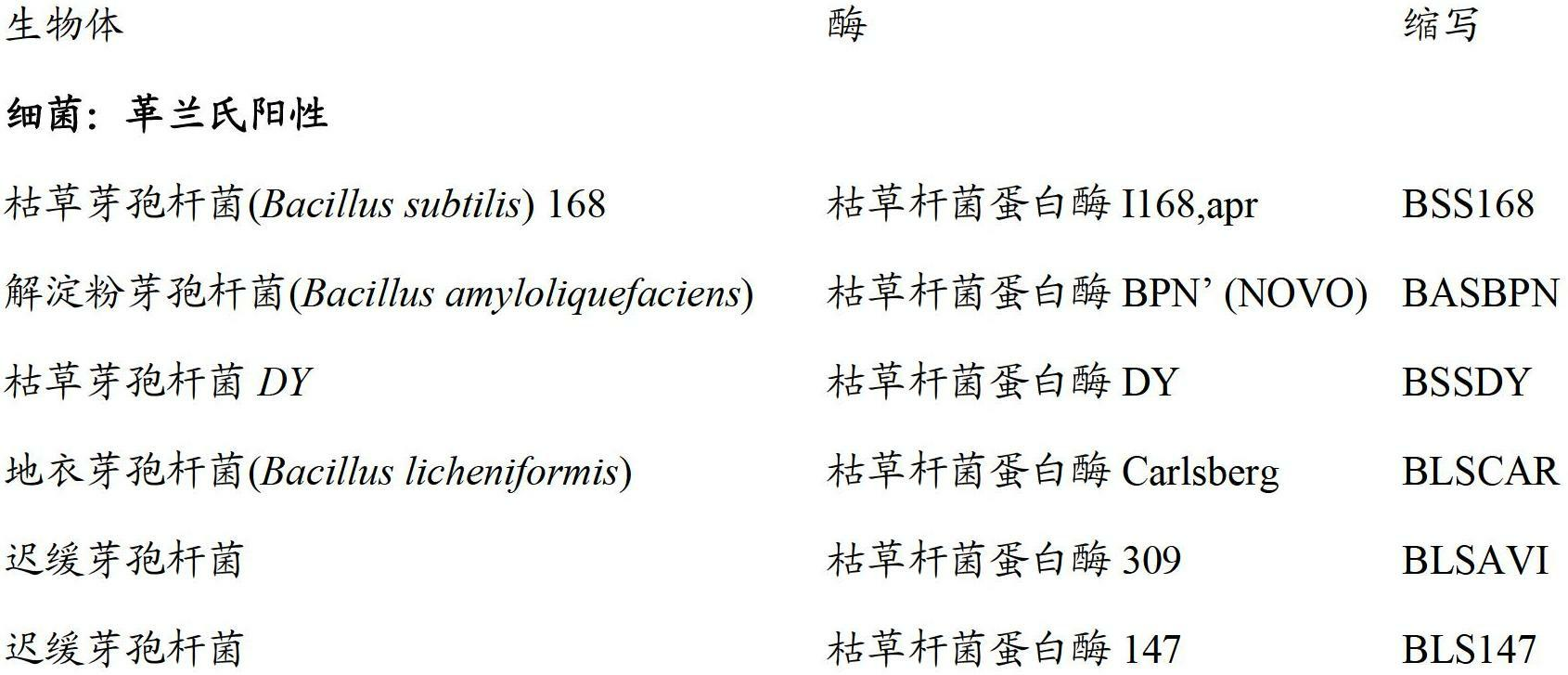Subtilase variants
A technology of protease and variant, applied in the field of automatic dishwashing composition, producing and using the variant of the present invention, cleaning and detergent composition, which can solve the problems such as difficult to completely remove stains
- Summary
- Abstract
- Description
- Claims
- Application Information
AI Technical Summary
Problems solved by technology
Method used
Image
Examples
preparation example Construction
[0138] Preparation of variants
[0139] Variants of the parent protease variants can be made according to any mutagenesis method known in the art, such as site-directed mutagenesis, synthetic gene construction, semi synthetic gene construction, random mutagenesis, shuffling (shuffling) etc. to prepare.
[0140] Site-directed mutagenesis is a technique for creating one or a few mutations at defined sites on a polynucleotide molecule encoding a parental protease variant. The technique can be performed in vitro or in vivo.
[0141] Synthetic gene construction involves the in vitro synthesis of polynucleotide molecules designed to encode a polypeptide molecule of interest. Gene synthesis can be performed using a variety of techniques, such as the multiplex microchip-based technique described by Tian et al. (Tian et al., Nature 432:1050-1054), and similar techniques in which oligonucleotides are synthesized acid and assembled on a photo-programmable microfluidic chip.
[0142] ...
Embodiment 2
[0357] Stain Remover Example 2: Typical European Powder Stain Remover Composition
[0358]
[0359]
[0360] The enzymes of the detergent composition according to the invention can use conventional stabilizers and protease inhibitors, for example polyols such as propylene glycol or glycerol, sugars or sugar alcohols, different salts such as NaCl; KCl; lactic acid, formic acid, boric acid or boric acid derivatives For example aromatic boronic acid esters, or phenylboronic acid derivatives such as 4-methylphenylboronic acid, or peptide aldehydes such as di-, tri- or tetrapeptide aldehydes or aldehyde analogs (forms B1-BO-R, where R is H, CH3, CX3, CHX2 or CH2X (X=halogen), B0 is a single amino acid residue (preferably with optionally substituted aliphatic or aromatic side chains); and B1 consists of one or more amino acid residues (preferably one, two or three), optionally containing N-terminal protecting groups, or as described in WO09118375, WO98 / 13459) or protein-type p...
Embodiment 1
[0393] Construction and expression of enzyme variants
[0394] Variants of the invention can be constructed and expressed by methods known to those skilled in the art. The following is a possible example of how to prepare a variant of the invention:
[0395] Site-directed mutagenesis:
[0396] Subtilisin 309 of the invention comprising specific insertions / deletions / substitutions Targeted variants are prepared by conventional cloning of PCR-generated DNA fragments (Sambrook et al., Molecular Cloning: A Laboratory Manual, 2nd Ed., Cold Spring Harbor, 1989) using oligos containing the desired mutations.
[0397] The template plasmid DNA may be pSX222, or an analog thereof containing a subtilisin 309 variant. Mutations were introduced into the variant constructions by oligo-directed mutagenesis.
[0398] The subtilisin 309 variant was transformed into E. coli. DNA purified from overnight cultures of these transformants was transformed into Bacillus subtilis by restrictio...
PUM
| Property | Measurement | Unit |
|---|---|---|
| molecular weight | aaaaa | aaaaa |
Abstract
Description
Claims
Application Information
 Login to View More
Login to View More - R&D
- Intellectual Property
- Life Sciences
- Materials
- Tech Scout
- Unparalleled Data Quality
- Higher Quality Content
- 60% Fewer Hallucinations
Browse by: Latest US Patents, China's latest patents, Technical Efficacy Thesaurus, Application Domain, Technology Topic, Popular Technical Reports.
© 2025 PatSnap. All rights reserved.Legal|Privacy policy|Modern Slavery Act Transparency Statement|Sitemap|About US| Contact US: help@patsnap.com



